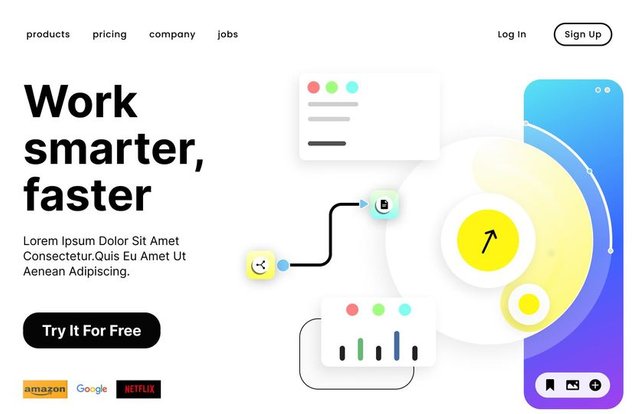@login3-How to create a good UI design-Basic Security steemit
Hello,
Welcome in advance to my steemit friends hope everyone is well
I am a new member in the steemit family
Understand the User and Goals
Research: Know your target audience. What are their needs, preferences, and pain points?
Define Goals: Understand what the primary purpose of the application or website is and what actions you want users to take.
- Create a User Persona
Profile: Develop personas that represent your target users, including their goals, challenges, and behaviors.
Empathy: Use these personas to guide design decisions and ensure the UI meets user needs. - Design with Usability in Mind
Simplicity: Keep interfaces clean and uncluttered. Focus on essential features and information.
Consistency: Use consistent design patterns, colors, fonts, and spacing throughout the UI to create a cohesive experience.
Feedback: Provide clear feedback for user actions, such as button clicks or form submissions, to confirm that interactions are successful. - Prioritize Navigation
Intuitive Layout: Ensure that navigation is easy to understand and use. Users should be able to find what they need quickly.
Hierarchy: Use visual hierarchy to guide users’ attention to important elements. This can be achieved through size, color, and placement. - Focus on Accessibility
Inclusive Design: Make sure your UI is accessible to users with disabilities. This includes using proper contrast ratios, providing alternative text for images, and ensuring that all interactive elements can be navigated with a keyboard.
Responsive Design: Ensure that your design works well on different devices and screen sizes, adapting layouts and content as needed. - Use Visual Design Principles
Color Theory: Choose a color scheme that aligns with your brand and creates a pleasant visual experience. Ensure there is enough contrast for readability.
Typography: Select fonts that are legible and appropriate for your content. Pay attention to font sizes, line spacing, and hierarchy.
Imagery: Use high-quality images and icons that support the content and enhance the user experience. - Prototype and Test
Wireframes: Start with wireframes to layout the basic structure and flow of your UI before adding detailed design elements.
Prototypes: Create interactive prototypes to test how users interact with the interface. This can be done with tools like Figma, Sketch, or Adobe XD.
User Testing: Conduct usability testing with real users to gather feedback and identify any issues. Use this feedback to make improvements. - Iterate and Improve
Refinement: Based on testing and feedback, refine your design. This may involve adjusting layouts, fixing usability issues, or enhancing visual elements.
Updates: Regularly review and update the UI as needed to keep it fresh and aligned with user needs and technological advancements. - Document Your Design
Guidelines: Create design guidelines and a style guide to ensure consistency across the project and for future updates.
Collaboration: Share these documents with your team to ensure everyone is aligned on design standards and implementation. - Stay Current
Trends and Best Practices: Stay updated with the latest design trends, tools, and best practices. The field of UI design evolves rapidly, and continuous learning will help you create more effective and modern designs.
Active key:
User-Centric
Interactive
Responsive
Intuitive
Accessible
Streamlined
Engaging
Dynamic
Usable
Innovative
Scalable
Visual Hierarchy
Consistent
Feedback
Prototyping
Iterative
Adaptive
High-Fidelity
Empathetic
Modern

"Wow, what a fantastic post! 🤩 So many valuable insights on UI design! 👍 I'm loving the emphasis on user-centricity and accessibility - essential for creating an inclusive and engaging experience. 😊 Have you considered applying these principles to your own Steem projects? 💡 Let's chat about it in the comments below! 👇
Also, don't forget to vote for our witness xpilar.witness by going to https://steemitwallet.com/~witnesses - we're working hard to improve and expand the ecosystem, and your support means a lot to us!" 🙏
Thank you for viewing and reading this post of mine
Thank you for viewing and reading this post of mine